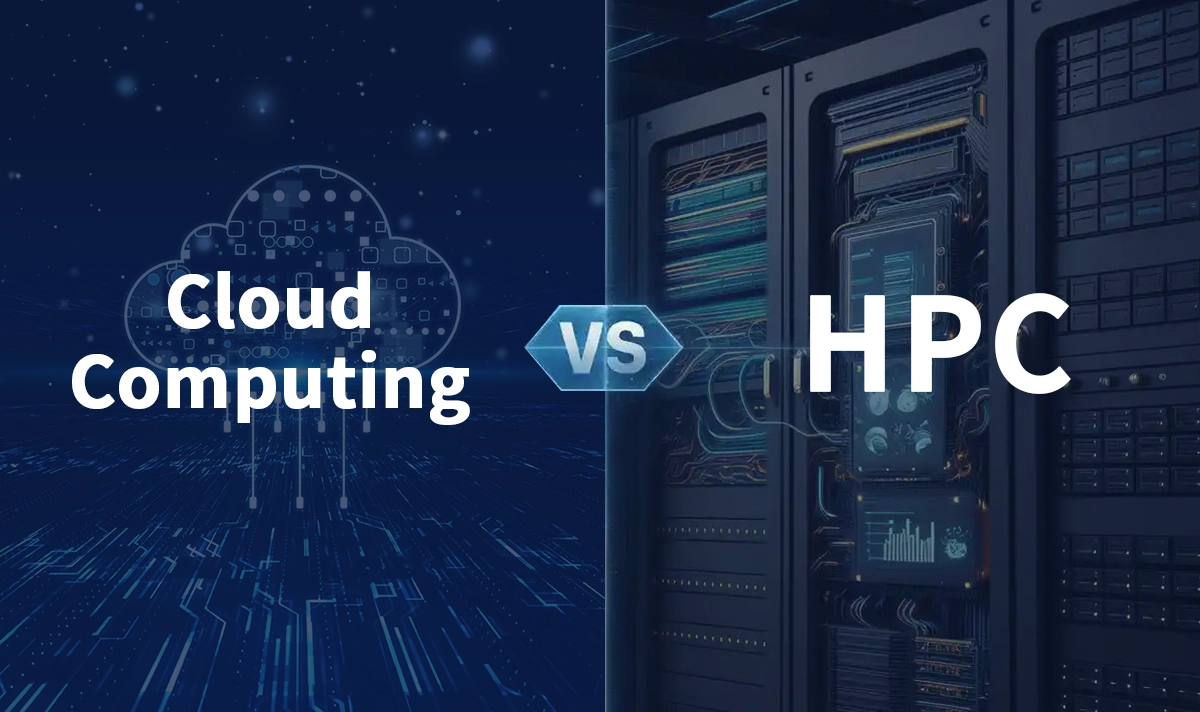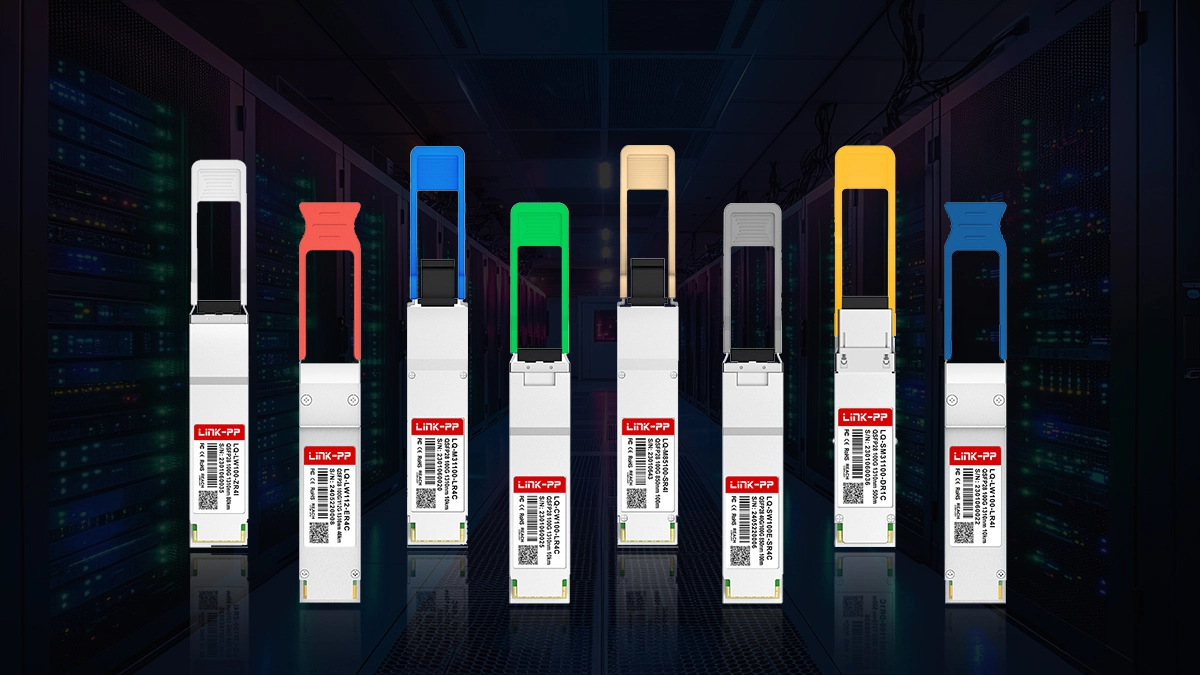
🔍 In today's data-driven world, the demand for immense computational power is exploding. Whether it's training complex AI models, simulating weather patterns, analyzing massive datasets, or running intricate financial models, organizations need robust solutions. Two dominant paradigms emerge: Cloud Computing and High-Performance Computing (HPC). While often mentioned together, they serve distinct purposes and excel in different arenas. Choosing the wrong one can lead to skyrocketing costs, frustrating bottlenecks, or missed opportunities. This guide cuts through the confusion, providing a clear, technical comparison to empower your infrastructure decisions.
💡 Defining the Contenders:Cloud Computing & HPC
Cloud Computing: The Agile, Scalable Utility
Core Concept: Delivering on-demand computing services (servers, storage, databases, networking, software, analytics, AI) over the internet ("the cloud") on a pay-as-you-go basis. Think of it as renting IT resources instead of owning and maintaining physical data centers.
Key Characteristics: Elastic Scalability, Broad Service Catalog (IaaS, PaaS, SaaS), Multi-tenancy, Self-Service Provisioning, Measured Service (Pay-per-use), High Availability/Fault Tolerance (distributed architecture).
Primary Strengths: Rapid deployment, cost-efficiency for variable workloads, access to cutting-edge services (AI/ML tools, managed databases), global reach, reduced management overhead.
Common Use Cases: Web & mobile applications, enterprise IT (email, CRM), development & testing environments, big data analytics (batch & streaming), AI/ML model training & deployment (especially distributed training), disaster recovery, content delivery.
High-Performance Computing (HPC): The Specialized Speed Demon
Core Concept: Aggregating massive computing power – often thousands of processors (CPUs, GPUs) working in parallel – tightly coupled via ultra-fast, low-latency interconnects to solve complex, computationally intensive problems that single machines cannot handle. Think of it as a finely tuned Formula 1 car for specific computational races.
Key Characteristics: Massive Parallelism, Specialized Hardware (CPUs, GPUs, TPUs), Ultra-Low Latency Interconnects (InfiniBand, Omni-Path), High Memory Bandwidth, Parallel File Systems (Lustre, GPFS), Job Schedulers (Slurm, PBS Pro), Often On-Premises or Dedicated Cloud "Pods".
Primary Strengths: Raw computational speed for tightly coupled simulations, ability to solve extremely large, complex problems requiring minimal communication latency, fine-grained control over hardware and software stack.
Common Use Cases: Computational Fluid Dynamics (CFD), Climate & Weather Modeling, Molecular Dynamics & Drug Discovery, Quantum Mechanics Simulations, Crash & Structural Analysis (CAE), Financial Risk Modeling (Monte Carlo), Genomics & Bioinformatics, Advanced Physics Research (e.g., fusion).
💡 Head-to-Head: Architecture, Performance & Cost (Where "HPC cluster" meets "Cloud scalability")
Feature | High-Performance Computing (HPC) | Cloud Computing |
|---|---|---|
Core Architecture | Tightly-Coupled Clusters/Supercomputers | Loosely-Coupled, Distributed Systems |
Interconnect | Ultra-Low Latency (InfiniBand HDR/NDR, ~100ns-1µs) | Standard High-Bandwidth Ethernet (RoCEv2, ~µs) |
Compute Focus | Raw Flops, Parallel Scaling (CPU/GPU Density) | Service Breadth, Elasticity, Managed Services |
Storage | Parallel File Systems (Lustre, GPFS - High IOPS/BW) | Object Storage (S3), Block Storage, File (NFS) |
Management | Complex, Specialized (Job Schedulers - Slurm, PBS) | Simplified, API-Driven, Self-Service |
Deployment Model | Often On-Prem, Dedicated Colo, Cloud HPC "Pods" | Public Cloud, Private Cloud, Hybrid Cloud |
Cost Model | High Capex (Hardware) / Lower Opex (Power, Staff) | Low/No Capex / Pay-as-you-Go Opex |
Scalability | Scale-Up/Scale-Out (Pre-planned, less elastic) | Highly Elastic (Instant Up/Down) |
Tenancy | Typically Dedicated | Multi-Tenant (Shared Resources) |
Best For | Tightly-Coupled, Latency-Sensitive Simulations | Variable Workloads, Web Apps, Managed AI/ML |
Performance Deep Dive: When Every Microsecond Counts
The performance gap is most evident in tightly coupled parallel applications where tasks constantly communicate. HPC systems, with their specialized low-latency network infrastructure (like InfiniBand using cutting-edge optical transceivers), minimize the time processors spend waiting for data. This is crucial for simulations where millions of calculations depend on results from neighboring processes. Benchmarking suites like SPEC CPU 2017 or HPCG often show significant advantages for dedicated HPC clusters on these workloads.
Cloud computing has made huge strides with cloud HPC solutions offering bare-metal instances and high-bandwidth/low-latency networking options (e.g., AWS Elastic Fabric Adapter (EFA), Azure InfiniBand, GCP Titanium). However, true bare-metal HPC performance in the cloud often requires renting entire, non-virtualized "pods" or "supercomputers," approaching the cost structure of on-prem HPC. For many embarrassingly parallel workloads (like parameter sweeps or some AI training tasks) or those using cloud-optimized frameworks, cloud performance can be excellent and more cost-effective due to elasticity.
Cost Considerations: Capex vs Opex & The Management Burden
HPC: Dominated by high upfront capital expenditure (Capex) for hardware (servers, high-speed networking switches, InfiniBand adapters, storage arrays), software licenses, and facility costs (power, cooling). Operational expenditure (Opex) involves skilled staff for management, optimization, and maintenance. Underutilization is costly. Requires significant investment in network infrastructure design.
Cloud Computing: Primarily operational expenditure (Opex). Pay only for the resources consumed (compute instances, storage GB, data transfer). Eliminates upfront hardware costs and reduces the need for deep in-house hardware expertise. Offers potential savings for variable or unpredictable workloads. However, costs can escalate unexpectedly with sustained high usage or data egress fees. Management is easier but requires cloud expertise. Cloud cost optimization is a critical ongoing task.
💡 The Critical Role of High-Speed Interconnects & Optics (Where LINK-PP Shines)
Both paradigms rely heavily on blazing-fast, reliable network infrastructure. This is the central nervous system, especially for HPC.
HPC: Ultra-low latency interconnects like InfiniBand HDR/NDR/ XDR (200Gbps, 400Gbps, 800Gbps+) are the gold standard. These require high-quality, low-jitter optical transceivers to handle the immense data rates across often significant distances within a data center. Signal integrity is paramount.
Cloud/Cloud HPC: While traditionally using high-bandwidth Ethernet (100G, 400G), cloud HPC solutions now integrate InfiniBand or specialized low-latency Ethernet. High-performance data center optics remain essential backbone components.
This is where choosing reliable, high-performance optical components becomes non-negotiable. LINK-PP is a leader in providing cutting-edge optical transceiver modules designed for the most demanding high-performance computing and cloud data center environments.

LINK-PP QSFP28-100G-SR4: Ideal for 100Gbps InfiniBand EDR (and Ethernet) connections over multimode fiber (OM3/OM4), offering a cost-effective solution for short reaches within racks or across adjacent racks. Crucial for building scalable HPC clusters.
LINK-PP QSFP56-200G-SR4: The workhorse for 200Gbps InfiniBand HDR and 200GbE deployments, using multimode fiber for longer reaches within the data center. Essential for modern HPC cluster backbones and high-tier cloud networking.
LINK-PP QSFP-DD-400G-FR4/DR4: Powering the next generation of 400Gbps (InfiniBand NDR, 400GbE) infrastructure. The DR4 variant is key for intra-data center links demanding high bandwidth and reliability, while FR4 offers a longer reach option. Foundational for high-performance cloud storage and next-gen AI/ML infrastructure.
LINK-PP OSFP 800G-SR8/DR8: At the bleeding edge for 800Gbps deployments (InfiniBand XDR, 800GbE). These high-density optical modules are engineered for future-proofing the most demanding exascale computing and AI training cluster environments. Requires meticulous network infrastructure design.
Using genuine, high-quality LINK-PP optical modules ensures optimal signal integrity, minimizes latency, reduces errors (BER), and guarantees compatibility and longevity within complex HPC systems and dense cloud data centers. Avoid costly downtime and performance degradation – demand LINK-PP reliability.
💡 When to Choose What? Your Decision Matrix
Choose HPC (On-Prem or Dedicated Cloud Pod) If:
Your core workload is a tightly-coupled parallel simulation (CFD, FEA, Molecular Dynamics).
Ultra-low latency communication between processes is absolutely critical.
You require maximum, consistent, and predictable bare-metal HPC performance.
You have massive, long-running jobs needing dedicated resources for weeks/months.
Data sovereignty, security, or regulatory compliance demands strict on-prem control.
You have the capital budget and specialized staff for management.
Choose Cloud Computing If:
Workloads are variable, bursty, or embarrassingly parallel.
You need rapid deployment and elastic scalability (up and down).
Access to a broad ecosystem of managed services (AI/ML, databases, analytics) is key.
You want to avoid large upfront Capex and prefer operational expenditure (Opex).
Your team has strong cloud engineering skills.
Global reach or disaster recovery is a primary concern.
Choose Hybrid HPC or Cloud HPC Solutions If:
You have a core on-prem HPC cluster but need to handle peak demand or specific cloud-optimized workloads (like large-scale AI training).
You want the flexibility of the cloud but require near-HPC performance for certain tasks using cloud HPC instances.
You are migrating towards HPC but want to start in the cloud.
Cost optimization across different workload types is essential.
💡 Conclusion: Synergy, Not Just Rivalry
Cloud Computing and HPC are not simply rivals; they are powerful, complementary tools in the modern computational arsenal. Understanding their fundamental architectures, strengths, weaknesses, and cost structures is paramount.
HPC remains the undisputed champion for the most complex, tightly-coupled simulations demanding maximum, dedicated raw power and minimal latency – a domain reliant on cutting-edge high-speed networking and components like LINK-PP transceivers.
Cloud Computing offers unparalleled agility, scalability, and access to services, democratizing access to significant compute power, especially for variable workloads and managed services.
Hybrid HPC and Cloud HPC Solutions offer the best of both worlds for many organizations, providing flexibility and optimized cost-performance ratios.
💡 FAQ
What is the main difference between cloud computing and high performance computing?
Cloud computing lets people use resources online. High performance computing uses strong computers for hard jobs. Cloud computing is good for daily business work. High performance computing is for science or technical jobs that need lots of speed.
Which option costs less for short-term projects?
Cloud computing is cheaper for short projects. Users pay for what they use. High performance computing needs more money at the start. The table below shows the cost difference:
Option | Short-Term Cost |
|---|---|
Cloud Computing | Lower |
High Performance Computing | Higher |
Can both cloud computing and high performance computing scale easily?
Cloud computing can grow or shrink fast. Users add or remove resources when needed. High performance computing can grow too, but it takes more time. Cloud computing is better for changing work.
Which industries use both cloud computing and high performance computing?
Many industries use both systems. Healthcare uses cloud computing for patient records. It uses high performance computing for gene studies. Finance, education, and entertainment also use both for different jobs.
Tip: Companies pick both to get the best results for their work.




